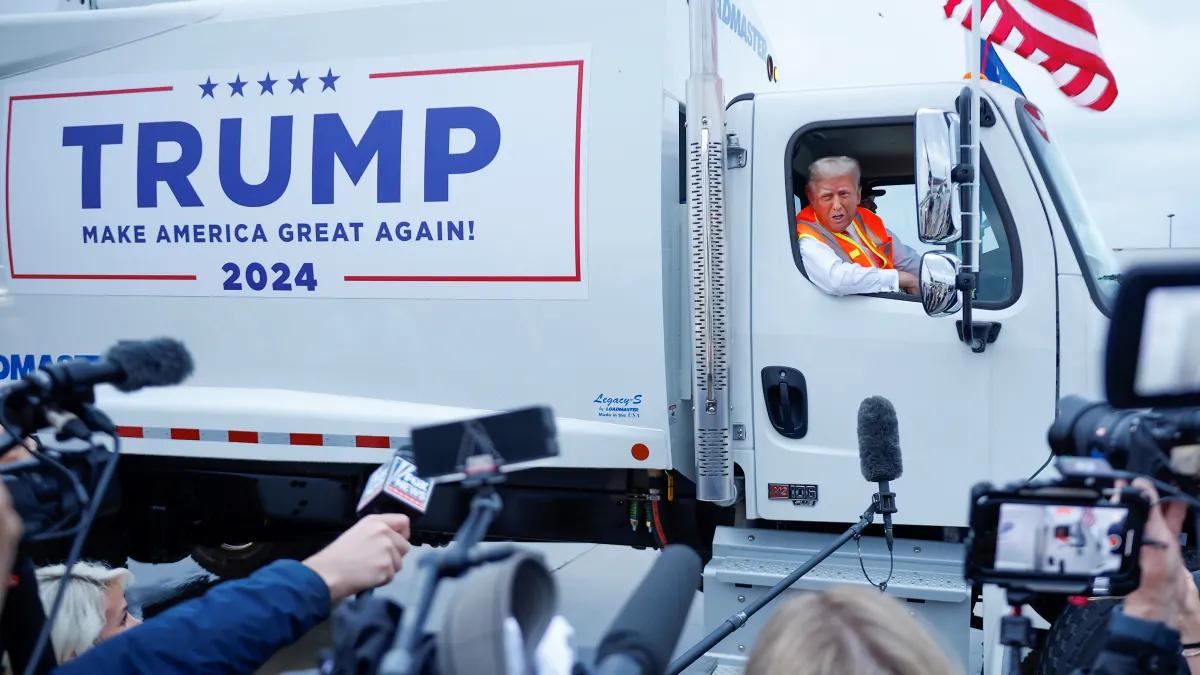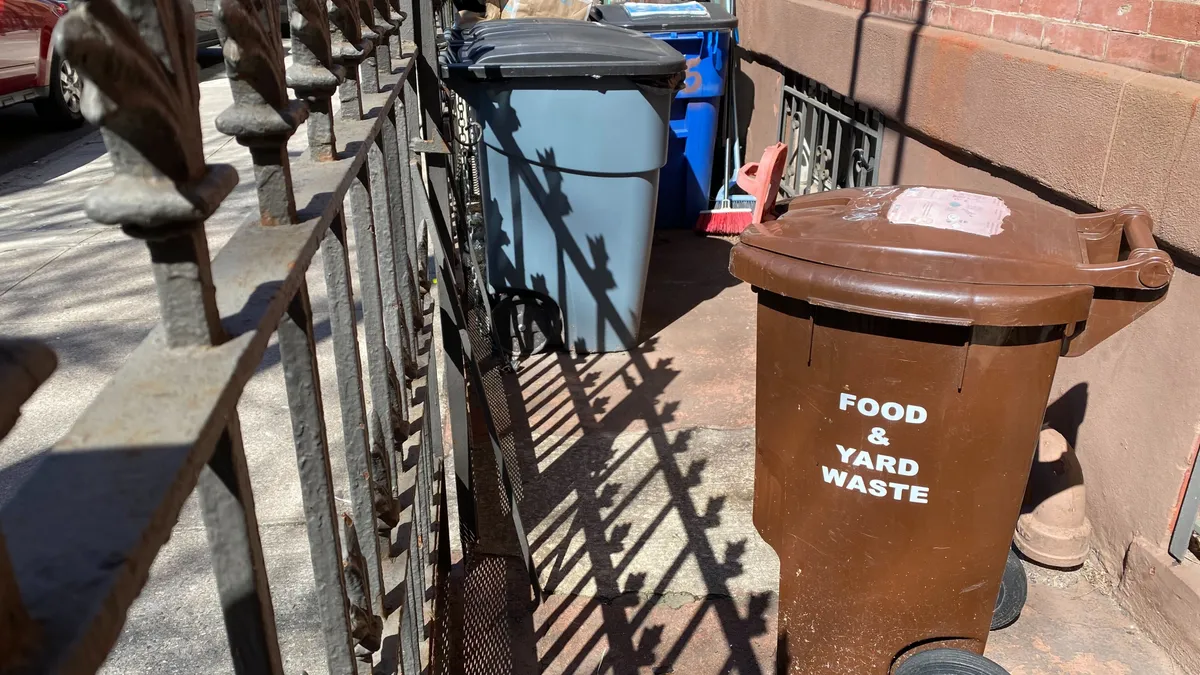It's been six months since the largest curbside organics program in New England went citywide. Now, the Greater Boston recycling community is watching closely to see how their cities could be next.
“Everyone needs to start doing it so it just becomes culture," Mike Orr, recycling director for the city of Cambridge in Massachusetts, said in an interview with Waste Dive. “We have to build that kind of culture, and so we need Somerville and Boston to do this."
Cambridge's direct neighbors previously ruled out the concept out due to cost, but both rekindled the idea within the past year. Disposal tip fees are only expected to go up as Northeast disposal capacity continues to constrict and some are pushing for a new "zero waste" approach in the region.
Years in the making
While Massachusetts does have a commercial organics diversion mandate, it's less common to see residential options around Boston that aren't drop-off or subscription-based. The fact that Cambridge's Department of Public Works (DPW) started offering the service as a pilot for 600 households in 2014 — and that it is now accessible to an estimated 25,000 households — is a sign that this may just be possible.
For Cambridge, a city of 110,000 people and counting, it currently costs $99 per ton to tip refuse at a Republic Services transfer station in Boston. From there, the material may go to a local waste-to-energy facility or a more distant landfill. Conversely, it costs $65 per ton to tip at Waste Management's CORe organics pre-processing facility in Boston. Plus, it's a much shorter distance for DPW trucks to travel in the area's notoriously congested traffic in the middle of the afternoon.
So far, Orr reports that two DPW trucks are collecting around six to seven tons of source-separated organics per day. This has led to an estimated 8% decrease in tonnage sent to the transfer station, and one of the trucks actually used to be on a waste route. Participation rates are currently running between 40-50%. Compared to other newer curbside collection programs, such as New York City's, these rates are quite high.
Orr attributes the interest to a long-running culture of organics diversion in the city that may be unique. As explored by local publication Cambridge Day, many residents still stored "swill buckets" in their backyards that were collected by DPW in "honey wagons" into the 1970s. The resulting concoction was given to pig farmers. Later, the city began selling backyard composting equipment in 1992, working with some local restaurants in 2005, opening drop-off sites in 2007 and ramping up school programs in 2009.
Based on the data so far, Orr doesn't think the backyard composters have switched over to curbside. It appears more likely that the uptick is driven by new participants, including some who may have been using a subscription service beforehand.
While he's still curious to see how these numbers play out on an annual basis, given the region's often heavy winters, Orr is already confident these results should be enough to encourage others to start their own pilots.
“The writing is on the wall that there’s not really a future that does not involve organics diversion," he said. “By the time you go citywide, the economics will be there."
Infrastructure and expansion
Another key factor in this equation, though, will be where to send it all. Waste Management has some room to expand, but there are few other operations of significant size in the immediate vicinity. Cambridge had been sending its pilot material to a farm composting operation and decided it wouldn't be big enough for the citywide push.
Now, the city's material is ground into a slurry in Boston before getting trucked out to the Greater Lawrence Sanitary District's wastewater treatment facility in North Andover for co-digestion. This has led to some criticism over whether the term "composting" is still accurate and questions over whether the resulting biosolids being created are environmentally sound.
Concerns about pharmaceuticals or other elements getting mixed in from sewage have become a focus of regional groups such as the Conservation Law Foundation, and remain an ongoing point of discussion. This became a focus at a Boston City Council committee hearing on curbside organics in June and can be expected to come up at a Cambridge City Council hearing on the same topic next week.
While Orr said he understands the concerns — and has since dug into research around phosphorus levels and other relevant areas — but asks that people "don't let perfect be the enemy of the good." Short of potentially sending material to multiple sites at farther distances, he challenges anyone to find alternative scalable solutions for such a densely populated urban area.
“Whatever we can do to allow organics to thrive is what we need to be doing," he said.
Next up, Cambridge DPW is eyeing a pilot program for buildings with 13 or more units starting in fall 2019 and will be working to optimize participation along the current routes. The city is in a three-year contract with Waste Management that runs through April 2021.
Perhaps by then Boston, Somerville or other nearby municipalities will be on their way toward implementing curbside organics collection pilots of their own. If so, this could spur even more investment in local processing infrastructure and make the concept cost-effective on a truly regional scale.
Editor's Note: Organics collection is now available to more than 5 million residents, according to a 2017 survey by BioCycle and the Institute for Local Self-Reliance, but is still viewed as too expensive by many in the private sector and local government. Waste Dive is committed to highlighting examples of how others are making it work in this new recurring series "Organics Growth." Your feedback on future communities to profile is welcome at waste.dive.editors@industrydive.com.























